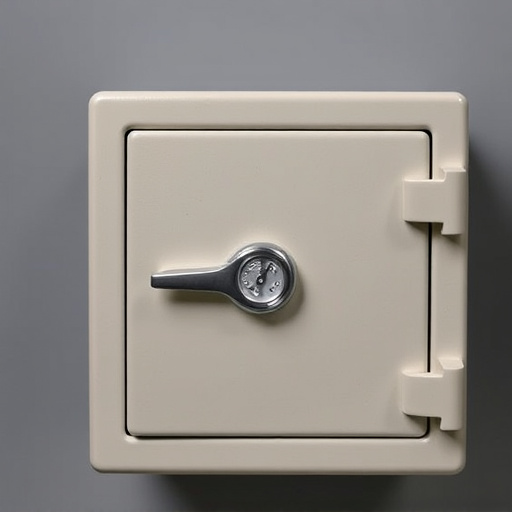In today's world, criminals are using fake bathroom cleaner bottles and other household products as covert storage for illegal substances, taking advantage of their mundane appearance. This trend poses challenges for law enforcement and security professionals, who must find innovative ways to detect these hidden spots, especially in metropolitan areas. While it offers a seemingly innocent solution, storing items in such places is dangerous due to potential chemical hazards and can contribute to environmental pollution. Educating consumers about identifying fakes and preventing counterfeits through verified sources is crucial in combating this trend, helping to keep communities safe and homes clean.
In today’s market, consumers often find themselves navigating a labyrinthine landscape of household cleaning products, some of which may not be what they seem. The practice of covert storage, where fake cleaning products are meticulously replicated and marketed as genuine, poses significant risks. This article explores the reasons behind this growing trend, focusing on the bathroom cleaner bottle hiding spot as a common secret for counterfeiters. We’ll delve into the dangers, implications, and practical steps to identify, prevent, and report these impostor products, empowering folks to make informed choices.
- Understanding Covert Storage: Why Fake Cleaning Products Are a Thing
- The Bathroom Cleaner Bottle Hiding Spot: Uncovering Common Secrets
- Dangers and Implications of Using Impostor Household Cleaners
- How to Identify, Prevent, and Report Counterfeit Cleaning Products
Understanding Covert Storage: Why Fake Cleaning Products Are a Thing
In today’s world, where privacy and security are paramount, it’s surprising to uncover a subtle yet significant trend: the use of fake household cleaning products as covert storage solutions. This practice involves disguising personal items or even illegal substances within seemingly innocuous cleaning bottles, such as bathroom cleaner containers. The concept is simple but effective; by blending in with everyday household essentials, these faked products offer an inconspicuous hiding spot for various items.
The allure of this method lies in its simplicity and the element of surprise it brings. For instance, a creative individual could hide valuable items or confidential documents inside a bathroom cleaner bottle, cleverly utilizing a space that would typically be overlooked. This practice has sparked curiosity among law enforcement agencies and security professionals, who are now exploring innovative ways to detect such covert storage methods, especially in high-risk areas like metropolitan centers.
The Bathroom Cleaner Bottle Hiding Spot: Uncovering Common Secrets
In the average household, the bathroom is a space that demands regular cleaning and maintenance. This often involves storing various cleaning products, including those specifically designed for bathroom use. However, what many people don’t realize is that this very necessity can become an opportunity for covert storage of fake or illegal substances. The bathroom cleaner bottle hiding spot is a common secret used by those looking to conceal their illicit activities.
Under the guise of organizing cleaning supplies, criminal elements have found creative ways to hide contraband within seemingly innocent products like bathroom cleaners. By designing or obtaining bottles with unique shapes or hidden compartments, they can discreetly store items such as drugs, weapons, or even cash. This clever tactic takes advantage of the trust we place in everyday household items, making it easier to smuggle these items past security checks and into our homes.
Dangers and Implications of Using Impostor Household Cleaners
Using fake or counterfeit household cleaning products can pose significant dangers and have severe implications for your health and safety. These impostor cleaners often contain harmful chemicals or substandard ingredients that are not disclosed on the label, making them a risky alternative to trusted brand names. For instance, a bathroom cleaner bottle hiding spot in an unsuspecting consumer’s cabinet could be filled with toxic substances, leading to accidental poisoning if used without knowledge of their dangerous nature.
The implications extend beyond individual health risks. Widespread use of such products can contribute to environmental pollution due to the release of harmful chemicals into the ecosystem. Moreover, fake cleaning supplies may not deliver the promised level of cleanliness or effectiveness, leading to a false sense of security in users who believe their homes are hygienic when they might not be. This is particularly concerning in areas like bathrooms, where proper sanitation is critical for preventing the spread of germs and diseases.
How to Identify, Prevent, and Report Counterfeit Cleaning Products
Identifying Counterfeits: One of the first steps in combating counterfeit cleaning products is to learn how to spot them. Look beyond the packaging; examine the product’s quality and consistency. For instance, if a bathroom cleaner bottle seems unusually light or its label is poorly printed, it might be fake. Check for any discrepancies in the product’s weight, smell, and color compared to authentic brands.
Prevention and Reporting: To prevent purchasing counterfeit items, buy from reputable sources and official retailers. Always check for official certifications and brand hallmarks. If you suspect a product is fake, report it to the relevant consumer protection agencies or local law enforcement. Providing detailed information, including photos of the packaging and any unique hiding spots (like an unusual bathroom cleaner bottle), can aid in their investigation.
In conclusion, the practice of using covert storage for counterfeit household cleaning products is a growing concern. By understanding common hiding spots like the bathroom cleaner bottle and being aware of potential dangers, consumers can make informed decisions. Regularly checking product authenticity and reporting suspicious items are vital steps in combating this issue. Stay vigilant to protect your home and family from unsafe alternatives.
